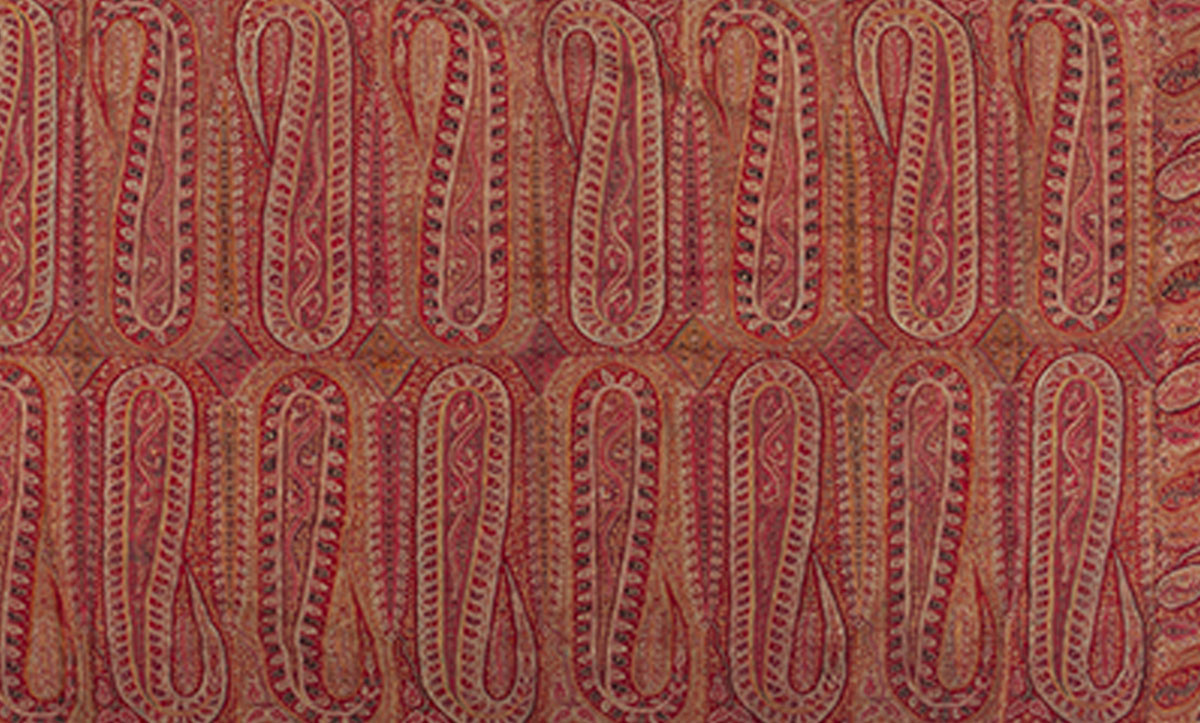ARTICLE
Kashmiri Shawl
Warm, lightweight handloom garments originally made in Kashmir using pashmina or shahtoosh yarn, Kashmiri shawls were traditionally made by weaver families, with the women spinning the yarn and men weaving the fabric. The shawls are characterised by their intricate buta pattern, woven using the kani twill weave or embroidered in sozni and amli, which are applied on a plain base. These shawls were also called ring shawls since the material was so fine that the entire shawl could be pulled through a small ring.
The earliest mention of Kashmiri shawls dates to the eleventh century CE, and they have been traded across North Africa, West, Central Asia and Russia since the sixteenth century CE. Imperial patronage has played a key role in the movement and design of the shawls. In India, the garment and its weaving industry received patronage from Mughal kings, who presented allies and high-ranking guests with the shawls as khil’at. This custom was later adopted by the Sikh ruler Maharaja Ranjit Singh, who incentivised Kashmiri weavers to relocate to parts of Punjab in the early nineteenth century.
The shawls also became part of European fashion from the eighteenth century onwards, facilitated by the British East India Company. While the shawls were worn primarily by men in South and Central Asia, in Europe, they were marketed as luxury apparel for women, with cashmere soon becoming symbolic of elite taste.
Following the development of European mechanical looms, mass-produced imitations of various Indian textiles, including Kashmiri shawls, became commonplace in Europe and across the world. The buta motif was replicated in Western versions of the garment and became more stylised with each iteration and more common in both high- and low-quality imitations of the Kashmiri shawl. The motifs on the pre-colonial designs of the shawls, which had simpler butas and floral elements that were limited to the borders, were soon replaced by the new paisley patterns all over the fabric favoured by Western buyers.
Today, Kashmiri shawls are a luxury product; it usually takes artisans up to a year to produce a single shawl, and the garment has limited functional value compared to more affordable polyester-based clothing. At present, traditional Kashmiri shawls are produced in limited numbers and face strong competition from machine-made shawls spun from materials other than pashmina.
Bibliography
Our website is currently undergoing maintenance and re-design, due to which we have had to take down some of our bibliographies. While these will be re-published shortly, you can request references for specific articles by writing to hellomapacademy@map-india.org.







